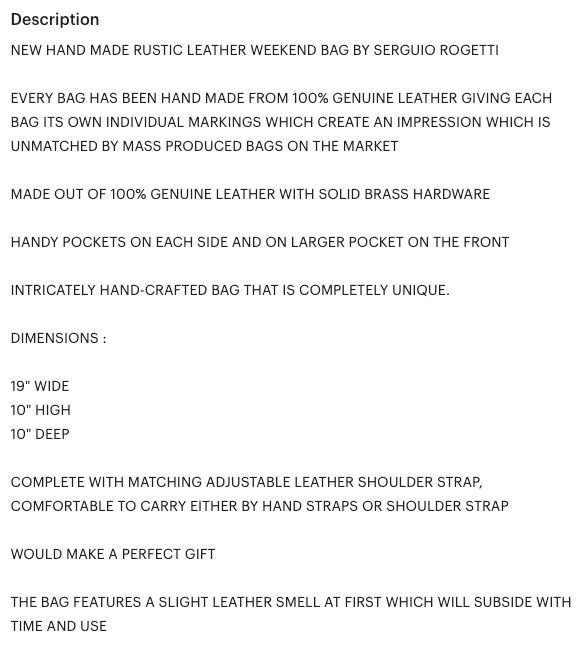How to increase your conversion rate for higher profit
You’ve worked hard to get visitors and customers to come to your website. Your traffic is pretty good… but you’re not making enough sales.
What if there were a few small changes you could make to your website design or content that made customers more likely to buy? That’s what conversion rate optimisation is all about.
Even a cheap website design can generate revenue if it’s optimised correctly. Your website can make more sales with a few simple techniques:
- Define your conversion goals
- Make sure your website is secure
- Improve your website’s usability
- Make your product descriptions more appealing
- Include a strong call to action
- Add a search function and get to know your search data
- Get reviews on your site
- Send abandoned cart emails
What is a conversion rate?
Your website’s conversion rate is the percentage of visitors who “convert” into customers.
Let’s say your website has 500 visitors per day, and 5 people buy an item from your store. Your conversion rate is 1%. If you have 500 visitors and make 50 sales each day, your conversion rate is 10%, and you’re making 10 times the amount of sales and profit for the same amount of work.
Conversion rate doesn’t have to be about online sales. You can track any desired action on your website as a conversion.
- If you’re a professional services business, a conversion could be that a potential client fills in your online enquiry form and asks you to call them back.
- If you’re a tradie, you might want customers to call you to make a booking or get a quote.
- If your website is a blog, a conversion could be when a visitor reads one blog post and leaves a comment, or gives you their email address to subscribe to your updates.
Whatever action is important to your business, and leads to an interaction or sale, counts as a conversion.
How do I work out my website’s conversion rate?
Google Analytics is a good place to start. Google Analytics gives you a wealth of data about your website’s traffic:
- how many visitors you get each day
- where visitors are coming from
- how visitors travel through your site
- when properly set up, Google Analytics helps you track specific conversions (this could be sales, email subscribers, contact form completion or phone calls)
Conversion rate is the number of visitors who complete a goal action on your website. You can track many different goals at once, and the goals don’t all have to be related to sales.
You might get:
- 500 website visitors a day (total traffic)
- 300 people view one or more product pages (60% goal conversion rate)
- 100 people read a blog post or information page (20% goal conversion rate)
- 50 people add items to the shopping cart (10% goal conversion rate)
- 15 people click on the checkout button (3% goal conversion rate)
- 10 people sign up to your email list (2% goal conversion rate)
- 5 completed purchases a day (1% goal conversion rate)
So imagine if you could convert more of those 300 people who viewed a product page, all the way through to the final goal of making a purchase? If just 5 more people completed a purchase you’ve doubled your conversion rate and your profit!
Here’s a detailed article by digital marketing whiz Neil Patel about how to set up conversion tracking in Google Analytics. If you find the process too technical, you can ask your website developer for help.
What is conversion rate optimisation?
Conversion rate optimisation is the process of making changes to your website so it generates more sales for your business.
Optimisation can include making your website design more user-friendly, improving the flow of your shopping cart checkout process, and writing more compelling product descriptions.
When you increase your conversion rate, you increase your profits. And when Google sees lots of activity on your website, including customers searching for key phrases and then following through to a purchase, it’ll send even more customers your way. So improving your conversion rate can also boost your search rankings.
There are lots of small and easy changes you can make to your website to increase your conversion rate. Some of them – like making a button more prominent or writing a strong call to action – you can DIY and they won’t cost you a cent.
Here are our top 8 tips for conversion rate optimisation on your website.
How can I increase my website’s conversion rate?
1. Define your conversion goals
Describe your goals for what you want customers or visitors to do on your website. This helps you define what you’re going to measure, and how.
For an eCommerce website, your big goal is for a customer to buy an item and reach the “Thank you for purchasing” page. So you can call that your main conversion goal or your macro goal.
But only a small percentage of customers might reach that stage, and for small businesses, this could be 1-2% of all website visitors. For this reason, you also want to choose some secondary goals or micro goals to track and improve.
Micro goals include:
- Visitor views a product and places it in the shopping cart
- Visitor clicks the checkout button
- Visitor enters their email address as the first step to checking out
- Visitor enters their address and clicks “calculate shipping” cost (if applicable)
All of these actions are one step closer to making a macro goal conversion – a sale.
By tracking these micro goals, you can measure the drop off rate at each step, and that can tell you a lot about your process and your pricing. Let’s say 25% of your website visitors place an item in the cart, then 15% get to the “calculate shipping” button, and only 1% end up completing the purchase.
This gives you valuable data – it might mean that your shipping costs are too high, or the costs might have been a surprise. Perhaps you need to show your shipping costs on the product page or include prominent links to a Shipping FAQ page early in the process.
Other micro goals can be user engagement or actions not directly related to a sales process, such as:
- Download a free e-book or tips cheatsheet (and give you their email address)
- Read an article on your blog and click to a second article
- Opt in to your e-newsletter
- Provide email address to get a % off voucher on their first purchase
It’s important to track some sales conversion goals and some non-sales goals. Not every customer buys something or converts on the first visit. They might want to read a few blogs to “get to know you” first. They might spot something they want, but they can’t afford it right now, so they’re waiting for a % off promotion on that range. They sign up to email offers and they wait for one they can afford.
All these actions are good progress towards your main conversion goals.
2. Make sure your website is secure
Customers are wary of having their data and credit card numbers stolen online. So if they feel like your website could be dodgy, they won’t buy from you.
Make sure your website has an SSL certificate and secure payment portal for eCommerce transactions. The most common and most trusted payment portals are PayPal and Stripe.
They can be incorporated into your eCommerce website and they give customers confidence that your business is legitimate and safe.
3. Improve your website’s usability
If your website is difficult to use, or it doesn’t work well on mobile, your conversion rate will suffer. Customers are impatient, so if they can’t find the information quickly, and make their purchase easily, they’ll give up and shop elsewhere.
Make sure your website is mobile responsive or mobile-friendly. You can check out our article on mobile responsive websites here.
Common usability problems and frustrations include:
- Website is not mobile friendly
- Pages take too long to load
- The checkout process has too many steps
- Users must create a log in and password before they can buy something
- Shipping prices are not clear until the last step – a lot of customers drop off here if shipping is more expensive than they expected
Ask a friend to test your eCommerce check out process and watch them do it. Look for points in the process where they get stuck or confused about what to do next (resist the urge to help!). Those points are where many of your customers may get stuck or find your website difficult to use, and they must be fixed. Any moment of hesitation or uncertainty is a point where customers can give up and be lost forever.
4. Make your product descriptions more appealing
Your product pages (or services pages) are your chance to explain why the customer needs this product in their life. If the description isn’t compelling, they won’t be convinced to buy it.
Describe what the product is, but also what it does and how it makes your customer’s life better. Include details like dimensions, materials, features and benefits.
Here are two examples of product descriptions for similar leather overnight bags.
The first description is from an Etsy product. The description includes a decent description of what the bag is, including the size, and features like hardware and straps. But the ALL-CAPS writing is shouty and hard to read:


above product from etsy.com
Next there’s this wonderful piece of copywriting for a leather bag on Anna Roe & Co. This description also includes details about the dimensions, materials and hardware, for an almost identical item.
The difference here is in the way the customer feels when they read about this bag. The writing hints at the kind of decadent lifestyle that the owner of this bag could enjoy. The status of owning such a lovely bag and how it makes you feel when you use it. The smell of the leather is highlighted as a desirable feature of a manly bag, whereas in the product description above, the leather smell is treated as an annoyance that will fade over time.

above product from annaroseandco.com.au
Which bag do you want? If both bags were the same price, which product description would make more sales conversions?
You can see the difference in the use of language in product descriptions. Great copywriting takes the customer’s reaction from “Yeah, I guess that’ll do” to “I want it: shut up and take my money!”
Assess your own product descriptions, or how you describe your service offering if you’re a service business. Are your descriptions compelling? If not, consider hiring a professional copywriter to help you. Yes, it’ll cost money, but if you make 10 times as many sales conversions by having great descriptions, it’ll be worth it.
5. Include a strong call to action
Sometimes you have to blatantly ask for the sale. One easy way to increase your conversion rate is to make obvious what the customer has to do to buy your product. Don’t make the customer hunt around your page for what to do next. They’re in a rush, so make it easy for them, with a nice prominent button or link text.
Calls to action for buttons include:
- Add to cart
- Checkout now
- Learn more
- Get started
- Try [service] for free
- Free trial (no credit card required)
- Read next
- Get 10% off (or $ off) your first purchase
Choose some that are appropriate for your product or service, and try them on your website. Then track your conversion rate changes for those pages.
For more ideas on calls to action, listen to this copywriting podcast with lots of useful tips to try on your website.
6. Add a search function and get to know your search data
Perhaps visitors land on your website looking for a certain product but they can’t find what they’re looking for. When you add a search function, you help visitors find what they need on your site.
But you also gain valuable search data (you’ll find the data in Google Analytics > Behaviour > Site Search). You can look at visitors’ search terms, which can help you identify gaps in your range. If you can find or create that product, you’ve got customers who are ready to buy it, which increases your conversion rate.
Look for non-product searches like “returns”, “shipping”, and “hours”. A lot of searches for these words could mean you need to make those sections more prominent on your website.
7. Get reviews on your site

Customers feel reassured when they see other customers having a good experience. 92% of customers read online reviews and testimonials when considering a purchase. In fact, 50 or more reviews per product can mean a 4.6% increase in conversion rates. And 68% of people say that positive reviews build trust and confidence in a business.
Koala mattresses have thousands of 5 star reviews, and they proudly advertise that they are “Australia’s highest rated mattress brand”. Here’s a detailed analysis of how Koala used reviews as a key component of their growth strategy (it’s a seriously interesting read!)
Add a review feature to your website for each product, and start emailing customers who have bought the product recently, to ask them to write a review. Include a link to that specific product to make it easy for them.
You have to take the good with the bad, and some customers simply can’t be pleased, so do expect some negative reviews.
8. Send abandoned cart emails
When a customer gets to your shopping cart, they’re almost ready to buy. But sometimes, for one reason or another, they decide not to buy today. By setting up an abandoned cart email, you may be able to convince those customers to buy, which increases your conversion rate.
The keys to success are:
- The first field in the checkout process must capture their email address
- Your system must record the email address and which items were in their cart, even if they abandon before they complete the process
- About 1 hour after they abandoned the cart, your system sends an automatic email reminding them about the products, and a link to resume the order
- Use cookies to reinstate the items into the cart – if they have to add the items again manually, you’ve lost them
- Ideally, include images of the products and positive reviews, to remind and reassure
- About 24 hours after, send another email. Consider a discount offer such as 10% off or free shipping if they order by a specific time – let’s say within the next 24 hours
- Make sure the cart emails turn off the moment the customer buys the product under the same email address. They don’t want to be hassled after they’ve bought it, due a glitch in the system
Here’s a detailed article about how to use abandoned cart emails, including some wonderful examples from big and small brands that might inspire your own version. And here’s another article about how to structure your abandoned cart campaign and timing.
Get started
Most of these tips are DIY, so why not choose a few and get started? It’s about constant testing until you find a conversion rate that you’re happy with.
If you find you’re getting stuck, or if your website functions won’t allow you to do what you want to do, contact your website developer for help and advice.
And if you need expert help to improve your conversion rate, get in touch with our SEO and website design experts on 1300 367 009.


